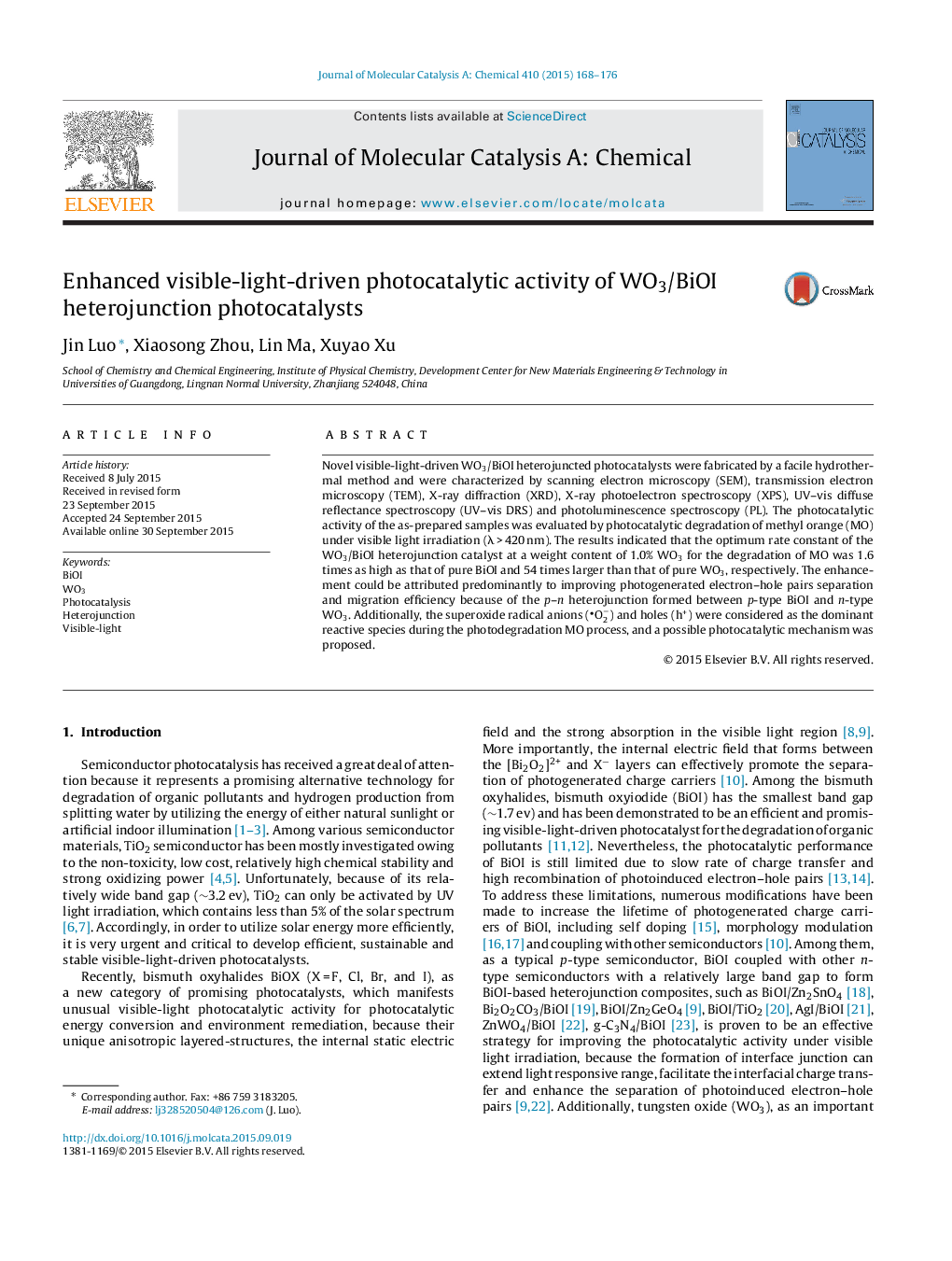| Article ID | Journal | Published Year | Pages | File Type |
|---|---|---|---|---|
| 64839 | Journal of Molecular Catalysis A: Chemical | 2015 | 9 Pages |
•Novel visible-light-driven WO3/BiOI heterojunction photocatalysts are synthesized.•WO3/BiOI exhibits much higher photocatalytic activity than pure WO3 and BiOI.•WO3/BiOI exhibits excellent stability for the photodegradation of methyl orange.
Novel visible-light-driven WO3/BiOI heterojuncted photocatalysts were fabricated by a facile hydrothermal method and were characterized by scanning electron microscopy (SEM), transmission electron microscopy (TEM), X-ray diffraction (XRD), X-ray photoelectron spectroscopy (XPS), UV–vis diffuse reflectance spectroscopy (UV–vis DRS) and photoluminescence spectroscopy (PL). The photocatalytic activity of the as-prepared samples was evaluated by photocatalytic degradation of methyl orange (MO) under visible light irradiation (λ > 420 nm). The results indicated that the optimum rate constant of the WO3/BiOI heterojunction catalyst at a weight content of 1.0% WO3 for the degradation of MO was 1.6 times as high as that of pure BiOI and 54 times larger than that of pure WO3, respectively. The enhancement could be attributed predominantly to improving photogenerated electron–hole pairs separation and migration efficiency because of the p–n heterojunction formed between p-type BiOI and n-type WO3. Additionally, the superoxide radical anions (O2−) and holes (h+) were considered as the dominant reactive species during the photodegradation MO process, and a possible photocatalytic mechanism was proposed.
Graphical abstractThe efficient charge transfer at the interface of WO3/BiOI heterojunction photocatalyst due to forming the inner electric field, which leads to an effective photogenerated electrons–hole pairs separation.Figure optionsDownload full-size imageDownload high-quality image (144 K)Download as PowerPoint slide
